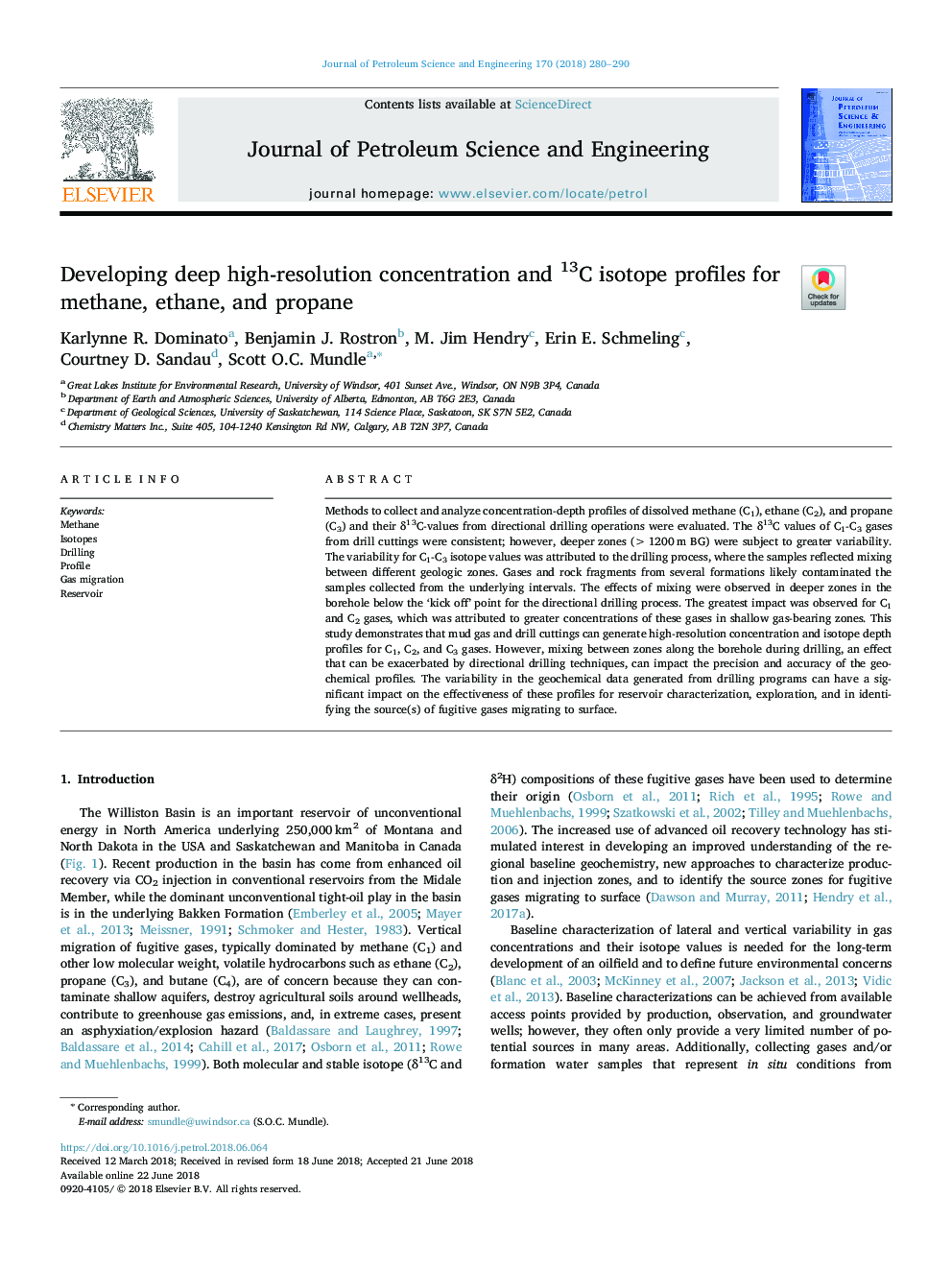| Article ID | Journal | Published Year | Pages | File Type |
|---|---|---|---|---|
| 8124441 | Journal of Petroleum Science and Engineering | 2018 | 11 Pages |
Abstract
Methods to collect and analyze concentration-depth profiles of dissolved methane (C1), ethane (C2), and propane (C3) and their δ13C-values from directional drilling operations were evaluated. The δ13C values of C1-C3 gases from drill cuttings were consistent; however, deeper zones (>1200â¯m BG) were subject to greater variability. The variability for C1-C3 isotope values was attributed to the drilling process, where the samples reflected mixing between different geologic zones. Gases and rock fragments from several formations likely contaminated the samples collected from the underlying intervals. The effects of mixing were observed in deeper zones in the borehole below the 'kick off' point for the directional drilling process. The greatest impact was observed for C1 and C2 gases, which was attributed to greater concentrations of these gases in shallow gas-bearing zones. This study demonstrates that mud gas and drill cuttings can generate high-resolution concentration and isotope depth profiles for C1, C2, and C3 gases. However, mixing between zones along the borehole during drilling, an effect that can be exacerbated by directional drilling techniques, can impact the precision and accuracy of the geochemical profiles. The variability in the geochemical data generated from drilling programs can have a significant impact on the effectiveness of these profiles for reservoir characterization, exploration, and in identifying the source(s) of fugitive gases migrating to surface.
Related Topics
Physical Sciences and Engineering
Earth and Planetary Sciences
Economic Geology
Authors
Karlynne R. Dominato, Benjamin J. Rostron, M. Jim Hendry, Erin E. Schmeling, Courtney D. Sandau, Scott O.C. Mundle,
